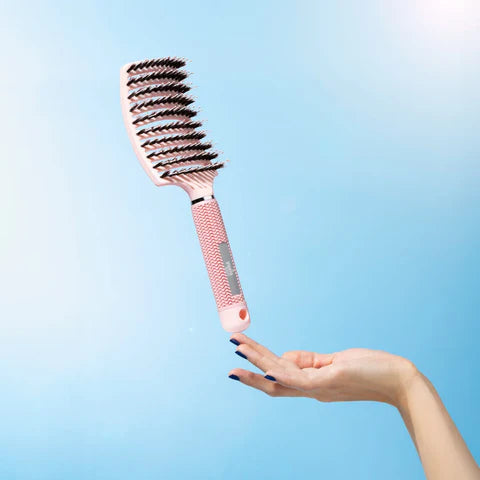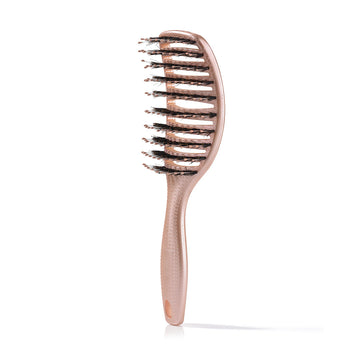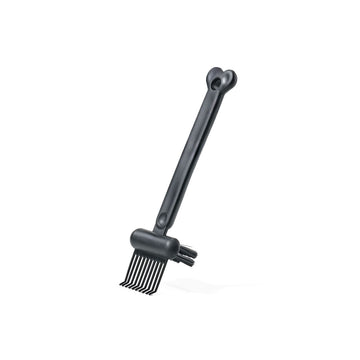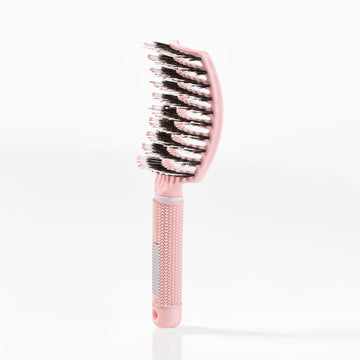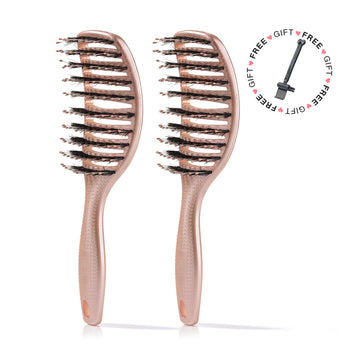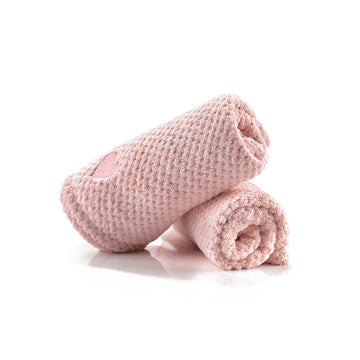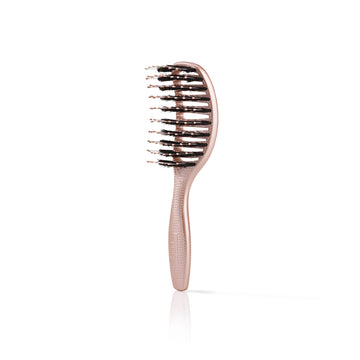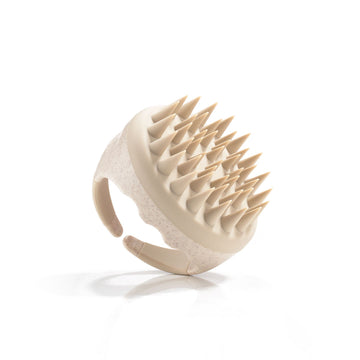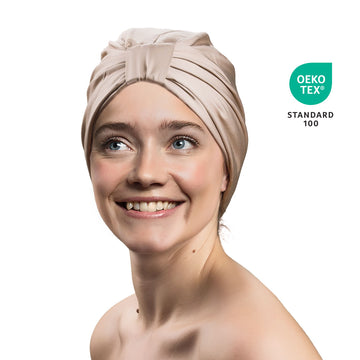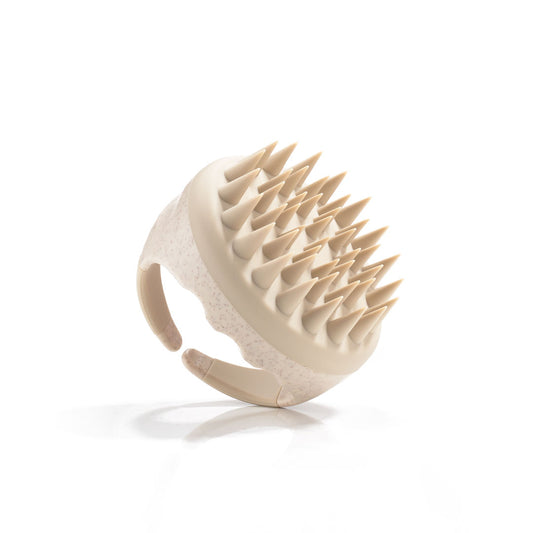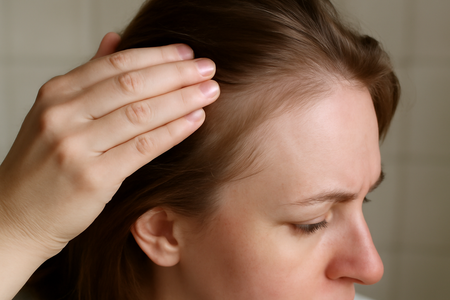
Practical solutions for temple hair thinning
Addressing hair thinning at the temples requires a multifaceted approach, focusing on gentle care and lifestyle adjustments. Here are some practical solutions to help manage and potentially reverse thinning in this area.
Gentle hair care practices
Choosing the right shampoo is crucial for maintaining scalp health and supporting hair growth. Opt for sulfate and silicone-free shampoos, like our Grow and Glow Shampoo. This formulation is designed to cleanse without stripping natural oils, promoting a healthy environment for hair to thrive.
Avoiding tight hairstyles
Reducing tension on the hair follicles is essential to prevent traction alopecia. Avoid hairstyles that pull tightly on the hair, such as high ponytails, braids, or cornrows. Instead, opt for looser styles that minimize stress on the hairline, allowing the follicles to recover and strengthen.
Stress management techniques
Stress can significantly impact hair health, leading to conditions like telogen effluvium. Incorporating stress-reduction techniques such as mindfulness, yoga, or regular exercise can help minimize the physical effects of stress on your hair. By managing stress effectively, you can reduce the likelihood of hair entering a resting phase prematurely.
Nutritional support
A balanced diet rich in essential nutrients plays a pivotal role in maintaining healthy hair. Ensure your diet includes adequate amounts of iron, vitamin D, B vitamins, and protein to support hair strength and growth. While diet alone cannot solve all hair thinning issues, it is a fundamental component of overall hair health.
Regular scalp care
Maintaining a healthy scalp environment is vital for preventing further hair thinning. Regularly cleansing the scalp with gentle products and ensuring it is free from excessive buildup can help keep hair follicles unblocked and functioning optimally. Consider incorporating a scalp massage into your routine to stimulate blood circulation and promote a healthier scalp.
Exploring non-genetic causes of temple hair thinning
While genetic factors like androgenetic alopecia are common culprits behind temple hair thinning, it's important to consider other contributors that might be at play. These include stress, nutritional deficiencies, and certain lifestyle choices. Understanding these factors can help in managing and potentially reversing hair thinning at the temples.
Stress and its impact on hair health
Stress is a significant factor that can lead to hair thinning at the temples. Telogen effluvium, a condition triggered by physical or emotional stress, causes hair follicles to enter a resting phase, leading to diffuse thinning. Managing stress through mindfulness, exercise, or other relaxation techniques can help mitigate its effects on hair health.
The role of nutrition in hair maintenance
Proper nutrition is essential for maintaining healthy hair. Deficiencies in iron, vitamin D, and B vitamins can weaken hair and contribute to temple thinning. Ensuring a balanced diet rich in these nutrients can support hair strength and growth. While diet alone may not solve all hair thinning issues, it is a vital component of overall hair health.
Styling habits and their effects
Traction alopecia, caused by tight hairstyles like ponytails and braids, can lead to temporary or permanent hair loss at the temples. To prevent this, it's important to avoid styles that exert excessive tension on the hairline. Opting for looser hairstyles can help reduce stress on hair follicles, allowing them to recover and strengthen.
Hormonal changes and hair thinning
Fluctuations in hormones, particularly during pregnancy, menopause, or due to thyroid disorders, can disrupt hair cycles and lead to shedding at the temples. These hormonal changes can affect hair density, but managing them with appropriate medical guidance can help maintain hair health.
Maintaining a healthy scalp environment
A healthy scalp is crucial for preventing further hair thinning. Regular cleansing with gentle products and ensuring the scalp is free from excessive buildup can keep hair follicles unblocked and functioning optimally. At Yuaia Haircare, we offer products like our Rosemary oil that can be used to nourish the scalp and support healthy hair growth.
Frequently asked questions
How can I tell if my hair thinning is genetic or due to other factors?
Genetic hair thinning often follows a pattern, such as a receding hairline or thinning at the crown. If your hair loss is sudden or accompanied by other symptoms, it may be due to stress, nutritional deficiencies, or hormonal changes. Consulting a healthcare provider can help determine the cause.
Can temple hair thinning be reversed?
Non-genetic causes of temple hair thinning, such as stress or traction alopecia, can often be reversed with lifestyle changes and appropriate hair care. For genetic hair loss, treatments may slow progression, but reversal is less likely.
What role does age play in temple hair thinning?
As we age, hair naturally becomes thinner due to reduced follicle size and slower growth rates. While this is a natural process, maintaining a healthy lifestyle and proper hair care can help mitigate the effects of aging on hair thinning.
 2-5 day delivery
2-5 day delivery
 25.000+ satisfied customers
25.000+ satisfied customers
 Satisfaction Guarantee
Satisfaction Guarantee





